This ISTQB foundation level certification course prepares you for the ISTQB-BCS Certified Tester Foundation Level (CTFL) Exam.
ISTQB, ISTQB Foundation Level, CTFL, Certified Tester, exam preparation, test design, test management, static testing, accreditation, BCS, training course, syllabus, certification, pass, importance, organization, activities, techniques, ISTBQ, ISTB, ISTQ, CTFL certification, Certified Testor, exam prep, test designing, test managing, statik testing, accreditiation, BCS certification, sylabus




